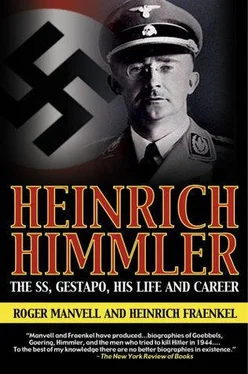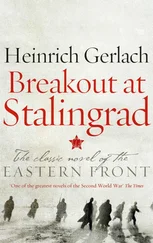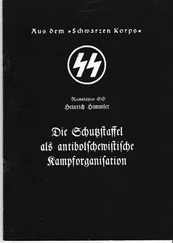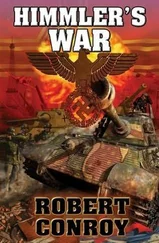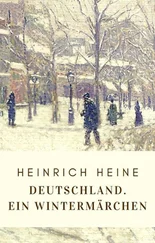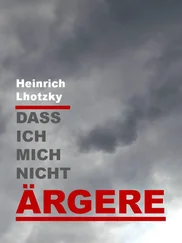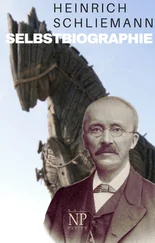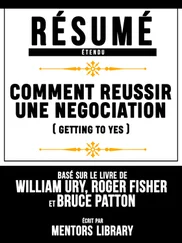‘In the course of that day, 30 June, a certain S.S. Colonel Beutel came to me from the S.S. with a special order which he had received from Heydrich. He was a young man, this Beutel, and he did not know what he should do; he came to obtain advice from me, an older man. He had an order in which there were approximately twenty-eight names and a postscript, from which it appeared that some of these men were to be arrested and others were to be executed. This document had no signature on it and therefore I advised this S.S. Colonel to get positive clarification as to what should take place, and warned him emphatically against any rash action.
‘Then, as far as I know, a courier was sent to Berlin and brought back eight orders of execution which came from Heydrich. The order read somewhat as follows: “By order of the Führer and Reich Chancellor…” then followed the name of the person concerned, “so-and-so is condemned to death by shooting for high treason”.
‘These documents were signed by Heydrich… On the basis of these documents eight members of the S.A. and the Party too were shot by the political police of Saxony in Dresden… That’s what I know about it, at least in my area.’ 5
Himmler during the period immediately preceding the purge kept in touch with the War Office, and in particular with Walter von Reichenau, a general in Army Administration who was prepared to work with the Nazis.
Between 21 and 29 June, Hitler toured restlessly from place to place on a variety of official duties, while in Berlin Himmler held a conference of the S.S. High Command on 24 June, while the Army was put on an alert on 25 June. On the same day Heydrich began, with the help of a few chosen officers of the S.D., to prepare the final lists of marked men both in the S.A. and outside it. In the middle of the wedding-feast of Gauleiter Terboven of Essen, for whom both Hitler and Goring acted as witnesses, Himmler arrived from Berlin with urgent news that action must be taken with as little delay as possible. This was no doubt part of Göring’s and Himmler’s scheme to keep Hitler in a state of alarm; after further conference, they left Hitler and returned to Berlin to carry out the final preparations for the purge.
Hitler was finally goaded into action during the small hours of 30 June, when he flew to Munich before dawn and drove by car to the sanitorium at the Tegernsee, where he roused Roehm from sleep, accused him of treachery and had him arrested. Himmler’s special detachment of guards commanded by Sepp Dietrich, the Leibstandarte, whose duty it was to protect Hitler, had been sent south to give all necessary aid, but Hitler, unable or unwilling to face the summary executions that were due to follow, retired to the Brown House, the Party headquarters in Munich. Confusion followed, for Hans Frank, the Bavarian Minister of Justice, was unwilling to execute men in the mass without trial merely because their names were on a typed list provided by Goring and Himmler and underlined in pencil by Hitler. Roehm himself was not finally shot until 2 July.
In Berlin, Goring and Himmler had neither time nor desire to observe the formalities of justice. They had their lists, they had their prisoners, and the executioners, squads of Göring’s private police, stood waiting to shoot their victims at Gross-Lichterfelde. The scene in Göring’s private residence at Leipzigerplatz, where he and Himmler identified the prisoners as they were brought in, accused them of treason and summarily ordered them to be shot as soon as their names had been ticked on the lists, has been described by eye-witnesses — in particular by Papen who, as Hitler’s Vice-Chancellor, Goring thought it wise to protect. He sent his adjutant, Bodenschatz, to bring him to the Leipzigerplatz, where he could be placed under guard. As soon as Papen arrived, Himmler gave the signal by telephone that the Vice-Chancellery could be raided. Bose, Papen’s press counsellor, was shot and his personal staff arrested. When Papen was finally given permission to leave, he found his office occupied by S.S. men and a state of violent confusion existing between them and Goring’s own police. Finally Papen was put under house arrest with an S.S. guard, whose captain said he was responsible to Goring for the Vice-Chancellor’s safety. Without doubt Himmler and Heydrich, new to the exercise of such absolute power, would have had him shot. Goring was more diplomatic. 6
The orgy of killing that spread throughout Germany during the weekend started from Göring’s headquarters. When they learned that Hitler accompanied by Goebbels was flying to Berlin from Munich, Goring and Himmler gathered their typed sheets together and drove with Frick to the Tempelhof airport to deliver an account of their stewardship. The sky was blood-red as the plane landed, and Hitler, sleepless for forty-eight hours, silently shook hands with the men, who clicked their heels as he greeted them, and then inspected a guard of honour lined up on the tarmac. The scene, unforgettably described by Gisevius who was present, had its own Wagnerian melodrama. Himmler, obsequious but officious, pressed his list of names under Hitler’s bloodshot eyes. While the others stood around at a discreet distance, the Führer ran his finger down the record of the dead or those about to die, while Goring and Himmler whispered to him. Then, with Hitler in the lead, the executioners moved off to the waiting cars, moving silently like a funeral procession in order of precedence.
Goebbels hastened to suppress reports of the mounting deaths in the German press, which was by now under his complete control. Only representatives of the foreign press, who had been hastily convened earlier that afternoon by Goring, were given a bare outline of Roehm’s alleged conspiracy by the man who had invented it. The assassinations did not stop until the following day, which was Sunday, when Frick, unburdening himself to Gisevius, finally expressed his horror at the behaviour of Himmler and Göring. He then went to warn Hitler, who had by now had some sleep, that the S.S. might well offer an even more sinister threat to his security than the S.A. But the Führer only wanted to relax at a tea-party he was giving in the garden of the Chancellery.
For Himmler and Heydrich, the provincials from the south, the massacre of 30 June was a rapid initiation into the ways of Hitler’s court. Heydrich was created a lieutenant-general of the S.S. with effect from the date the men he had listed had begun to face the firing-squad. Goring received the personal congratulations of Hindenburg, sent from his deathbed. On 26 July the S.S. was formally given its independence by Hitler. When Hindenburg eventually died on 2 August, Hitler merged the offices of President and Chancellor and made himself Der Führer, Supreme Head of the State, and also Commander-in-Chief of the Armed Forces of the Reich. The Army was immediately required to take the oath of allegiance to Hitler in person.
On the day before Hitler’s proclamation of the independence of the S.S., their associates in Vienna murdered the Austrian Federal Chancellor, Dr Dollfuss, as part of an abortive attempt to seize Vienna for the Austrian Nazis. Hitler at once disowned any part in this plot that had failed, not because he disapproved of what had been attempted but because it had been both ill-timed and unsuccessful. As would be expected, there is no exact record that either Himmler or Heydrich were directly involved in the instructions given to the S.S. in Austria. It must at least have shaken Hitler’s confidence in the discretion of his S.S. commanders. Although they remained strictly silent at this stage, when Hitler chose to dissociate himself from the assassination, they were at a later and more favourable time after the Anschluss to hear the Austrian S.S. men who died during the course of the putsch proclaimed as martyrs by Rudolf Hess. In July 1934, however, when Hitler was still involved in the aftermath of the Roehm purge, this bloody act by his adherents in Austria compromised still further the heroic reputation he was attempting to build up in the world outside Germany. It is not known whether he reprimanded the men he had so recently promoted into the select ranks of the Nazi leadership, but at the very least, Himmler must have carried some responsibility for the indiscreet murder of the Chancellor, since the Austrian S.S. obtained their arms from the S.S. in Germany. Among the men arrested in Austria was Ernst Kaltenbrunner, a lawyer whom Heydrich had employed as his agent. After Heydrich’s assassination in 1942, Kaltenbrunner was to take over the responsibilities Heydrich had exercised in Berlin.
Читать дальше
